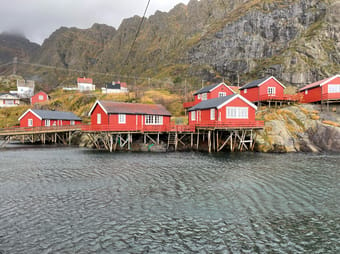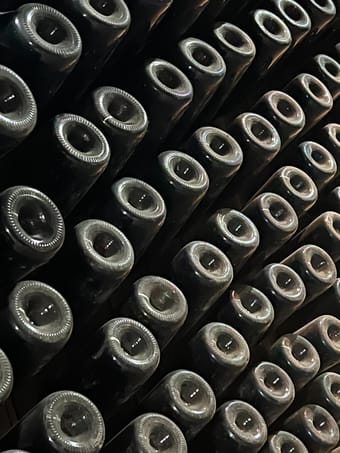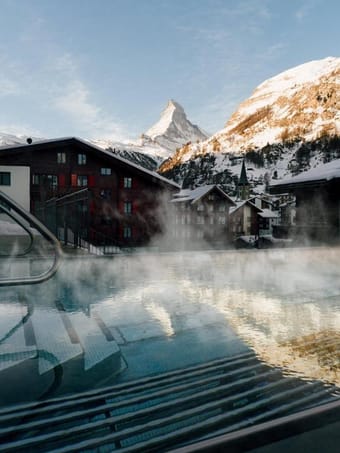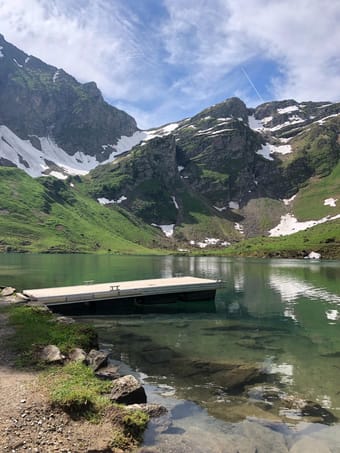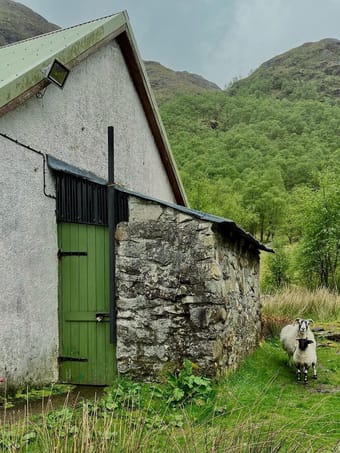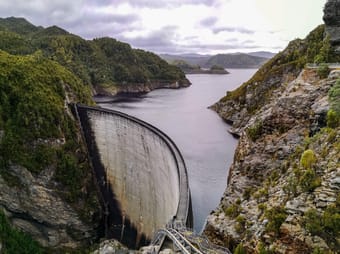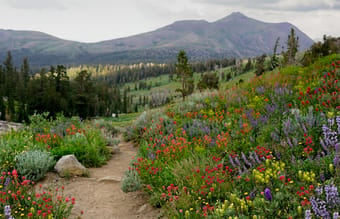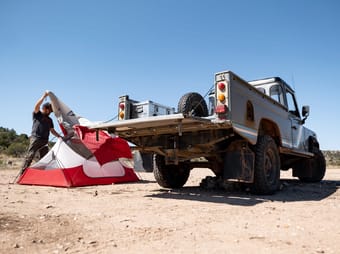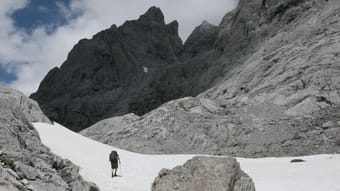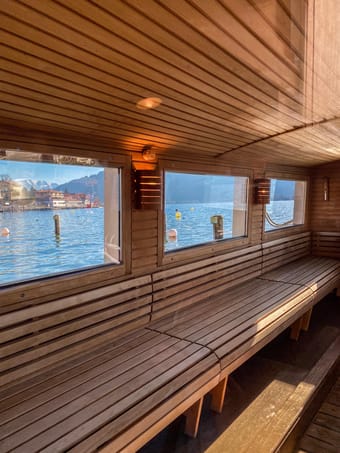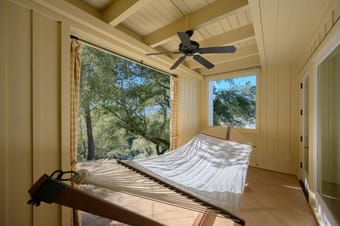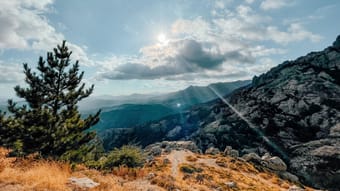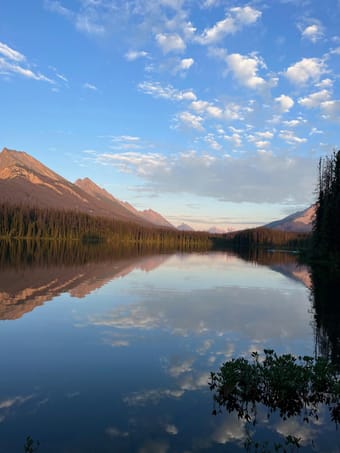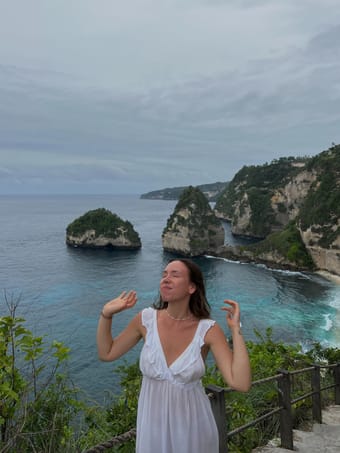Results for Hike
⛰️This guide offers tips and tricks how to explore and see the best of beautiful Lofoten and Oslo.
⛰️Tips for the best hikes and towns to visit in Lofoten.
📍Tromsø – the capital of the Arctic
📍Aurora hunting tips
📍Offers an idea for your itinerary
50+ • Accessibility • Backpacker • Couples • Digital Nomads • Family • Gluten-free / Celiac • Groups • LGBTQ+ • Halal • Pets • Plus Size • Female Solo • Vegan • Vegetarian • Adventure • Budget • Outdoors • Overlanding • People & Culture • Road Trip • Romantic • Slow Travel • Sustainable/Eco
$5.00
5
Natalie • Artist • Travel & Lifestyle • UGC Creator
Available for hire
🍷Free Guide - Georgian wineries
With dedicated research, I found the perfect winery to celebrate my wedding and saved many others perfect for-rest and wine-tasting locations. Now, my friends are enjoying the beautiful ambiance of those wineries from the list. And so you can!
What is inside:
- The most beautiful town in the whole of Georgia and tips on what to do there
- Handly picked the best wineries and resorts to my taste
- Waterfalls nearby where you can have a nice hike
- Wine and Dish recommendations
- Secret place where you can have a wine bath
- Best places to try Georgian cuisine and rest
- Masterclass recommendations
50+ • Backpacker • Business • Couples • Digital Nomads • Family • Groups • Female Solo • Architecture • Boutique • Wine • Wellness • Slow Travel • Shopping • Romantic • Road Trip • Relaxation • Photography • People & Culture • Outdoors • Luxury • History • Foodie
Free
5
Looking for a relaxing weekend gateway or the perfect hotel for your skiing trip to Switzerland? This is your ultimate guide, no matter the budget you have in mind.
This guide compiles some of the best hotels to either fully disconnect or relax after a day out in nature. From a hot tubs to saunas or massages, these hotels have everything you need to recharge.
Most of them are located in the Alps, meaning within mountain towns rather than in cities. These mountain towns, some of which are more popular than others (i.e. Zermatt or Verbier), are were people come to ski, hike, bike, or just enjoy stunning views. Even locals, aka me, come to theses towns/places year around.
I created four categories (from "on a budget" to "luxury"), depending on your budget.
(Cover picture: BEAUSite Zermatt)
Couples • Family • Female Solo • 50+ • Car-free • Adventure • Budget • Design • Foodie • History • Luxury • Outdoors • Relaxation • Romantic • Wellness • Wine
Free
5
Emilie La Gavi
Available for hire
Switzerland Like A Local: 10 lakes worth hiking to + where to eat & stay
Looking to explore Switzerland like a local and discover hidden lakes? This guide is for you if you are looking for a day adventure or a weekend escape in the South-West of Switzerland.
This guide includes various lakes worth hiking to, with restaurant available on your way, and even where to stay overnight if you wish to!
If you are looking for an app when going hiking: SwitzerlandMobility. In there you will find every information you need about hikes you want to do!
Tip: if you are a tourist (not living in Switzerland) and will be traveling by train for a few days, it is totally worth looking into buy a pass for public transportation. It might sound expensive but wait until you see single trip prices... Single trip ticket are so expensive, almost every resident has a monthly or yearly pass... Jump to the end of the post to purchase your affiliated link for your Swiss travel pass!
Always double check the weather before going! As locals say, in Switzerland, you can experience the four season in one day!
Don't hesitate to reach out for more questions! Enjoy
Backpacker • Car-free • Family • Pets • Female Solo • Adventure • Budget • Camping • Foodie • Outdoors • Overlanding • People & Culture • Road Trip • Slow Travel • Sustainable/Eco • Van Life
Free
5
Scotland - the land of iconic views, food, and a FANTASTIC campervanning destination. We campervanned here for two weeks with this itinerary and had such an amazing experience. This guide covers 14 days and a whole lot of campervanning - get ready for a roadtrip! It covers the following destinations:
- Glencoe
- Isle of Skye
- NC500
- The Cairngorms
- Aberdeen
- Edinburgh
- Glasgow
& MANY destinations and things to do in between these major stops.
For some places it includes restaurants (but not all, as it's a campervanning itinerary so you'll likely be cooking most of your meals), lots of adventure (hikes, views, and activities), where to stay (parking your campervan is SO easy in Scotland we've included where to look for camping spots and also included campervan sites to hook up to for each spot), and inside intel on what you should know before you visit.
This itinerary is for the adventurous and people who want to get BUSY during their time here to see as much as possible. It includes quite a bit of driving and lots of activities. Whilst this itinerary is jam-packed, you can easily choose what you want from each day to give you more downtime, and spread some of the activities over multiple days to cut down on your driving time - it's very easily manipulated to suit your needs.
Family • Backpacker • 50+ • Couples • Digital Nomads • Female Solo • Adventure • Architecture • Camping • Foodie • Outdoors • Overlanding • Relaxation • Road Trip • Van Life • Photography • RV
$12.00
4
Come with me on a journey through Australia's island state known for its rugged landscape, unique wildlife and breathtaking scenery. Explore the wilderness in a World Heritage Area, ancient rainforests, jagged peaks, towering sea cliffs and beaches adorned with vivid orange lichen-covered rocks or immerse yourself in Tasmania's culinary scene.
My guide includes the most beautiful places to see, hikes, what to do, great freedom camps and other accommodation recommendations and where to find locally produced delicacies.
Find all of these almost 60 recommendations on an interactive map that is compatible with your phone so you'll have it always with you during your travels and you'll also get all the future updates.
50+ • Backpacker • Couples • Family • Female Solo • Adventure • Boutique • Budget • Camping • Luxury • History • Outdoors • Van Life • Slow Travel • Road Trip • Photography • RV
$7.99
$9.99
20% off
4
California Gold Country holds an incredible amount of history, beautiful outdoor activities, alpine lakes, hiking, food, wine, & more. In my opinion, this section of Highway 49 is the best road trip in the West. The entire 49 is amazing, but in case you're short on time, this guide focuses on my favorite section of it.
This guide holds everything you need for a 3-5 day trip in this region. It includes information on hikes, swimming spots, small towns, wine, food, history, accommodation, camping, and more. That amount of time will leave you space to have at least one full outdoors day, one full wine & food day, and some other activities in between.
It's a great trip for someone like me who likes getting dirty & spending time outside and in the backcountry, but also likes really good food and some of the best wine California has to offer. There's something for everyone on this trip. You can walk on a dirt trail for an hour and a half, see wildflowers, swim, go wine tasting, learn about history, and more.
This trip can be done any time of year. If you visit in the winter, you may want to sub out some skiing for swimming & some of the hikes might be inaccessible without snowshoes or XC skis. If you go in the middle of summer, it will be hot at lower elevations, but still amazing. Spring will give you some incredible wildflowers.
This area is less frequented & should be appreciated. It's a great trip if you're looking to escape the crowds. This trip can easily be done as an add-on to Lake Tahoe or Sacramento.
Use this guide as a set itinerary, or draw from it to create your own trip!
Backpackers • Solo Female • Couples • Groups • Adventure • Architecture • Art • Boutique • Budget • Luxury • Foodie • Wellness • History • Shopping • Design • Nature • Overlanding • RV • People & Culture • Romantic • Sustainable/Eco • Slow Travel • Photography • Roadtrip • Wine • Coffee • Beach • Mountain • Camping • Relaxation
$25.00
4
Located on the South Eastern coast of Sri Lanka, Arugam Bay Arugam Bay is a famous surfing hotspot - for locals and tourists, alike. The 'surfers paradise' is one of the best beaches in Sri Lanka - and a must-visit destination - at least once in your life.
Apart from surfing, there are plenty of things to do in the tourist-friendly town. You can chill by the beach, witness breathtaking sunrises, party, or even hike.
It can be challenging to organize and plan a trip in an unknown country (we've all been there), which is why I have composed this guide to make life easier for you. In this guide, you will find:
🏄♀️ Things to do
🏠 Places to stay
🍴 Places to eat
🚗 Transport to and around Arugam Bay
🎒 Packing essentials
🦺 Safety Tips
Hope this guide helps you when planning your trip to Arugam Bay! Happy Travels! 🧡
Adventure • History • Wellness • Nature • Beach • Relaxation • Sustainable/Eco • Budget
$10.00
4
Adventure is afoot! This week, we venture into Coconino National Forest to explore the backcountry around Sedona, where the Arizona landscape shows off its most vibrant colors. Mother nature tests my resolve as I endure a windy evening in the ground tent. The Land Rover Defender 110 traverses Schnebly Hill Road with grace and aplomb as inconsequential bits fall off. The episode concludes with a picturesque hike along the Hangover Trail.
Backpackers • Digital Nomads • Solo Female • Couples • Groups • Adventure • Nature • Camping • Photography • Roadtrip • Coffee • Mountain • Relaxation
$15.00
4
We leave Tucson, and start traveling north in the Land Rover Defender 110 and the Revel, but things are off to a rough start. This episode kicks off at Basha's, which is weird, followed by a hike to the top of Picacho Peak. After troubleshooting a problem with the truck, I head off into the desert to explore near Wickenburg, Arizona. Some delicious food is featured in this episode, and I also demonstrate improper use of a soft-shackle.
Digital Nomads • Adventure • Nature • Overlanding • RV • Foodie • People & Culture • Romantic • Photography • Roadtrip
$20.00
4
We venture further into the desert in the Land Rover Defender 110 Hi-Cap, settling in for the week near Ajo, Arizona. I set off into Organ Pipe National Monument to go on a mountain hike, featuring a stunning natural arch. I take the truck out to do some exploring in the lovely Sonoran Desert. Following windy conditions and a rough night in the ground tent, I retreat back to the Winnebago Revel, spill coffee, and spend the day in bed, grumpy and high-maintenance. Orangie update toward the end of video!
Backpackers • Solo Female • Couples • Groups • Adventure • Nature • Overlanding • RV • Coffee • Mountain • Camping
$10.00
4
Seven-day trek based in refugios.
INTRODUCTION
The Picos de Europa is a region of limestone peaks reaching over 2500 metres above sea level; the highest being Torre de Cerredo at 2650 metres. The route described here is one that I hiked alone in early summer. The best time to tackle the route is between June and September. There is more likely to be snow on the high passes in early June but they are usually not to difficult to negotiate.
The Picos de Europa is not as well known as the Pyrenees or Alps and as such the hiker traffic is less and the tourist infrastructure is less developed. This makes the area feel less spoilt but it can also make it a more challenging area to explore with fewer trails and little to no signposting. Always take a map with you: the Editorial Alpina 1:25,000 maps are the best. I took these and also used the outdooractive app and downloaded the relevant map tiles. This is useful for pinpointing where you are, in what can be confusing terrain. I was lucky to have clear weather for my entire trek but I would imagine that it's pretty difficult to navigate when the cloud is down on the mountains so take a compass too.
You can stay in refugios every night on this hike and wild camping is permitted above 1500m; details below.
I can't recommend the Picos de Europa as a hiking destination enough. The mountains are magnificent but there are also beautiful extensive woodlands at lower altitudes, as well as meadows full of wildflowers and butterflies. The juxtaposition between the stark limestone peaks and the gentle greenery of the valleys is beguiling.
DISCLAIMER: Please note that hiking in the Picos de Europa is not risk free. It is a very challenging area in which to hike. I accept no responsibility for any accidents you may experience while hiking this route. You are responsible for your own safety. Some of the dangers and difficulties are listed a little further down this guide.
HOW BUSY?
Unlike some of the more well know hikes around Europe this trail is less well trodden and as such the trail can be quite hard to follow at times, and at other times there is no trail! Despite this, refugios, being small, fill up fast (see below).
REFUGIOS
The hike is made easier if you stay in the staffed refugios where you can recharge your metaphorical batteries. Accommodation at these mountain huts is in communal dormitories and you will need to bring your own sleeping bag. It's best to book ahead as they are often full throughout the summer. Prices are around the €12-17 mark and they also do affordable meals (breakfast, picnic lunch and dinner).
There is also a handful of unstaffed, very basic mountain shelters with no services and no beds but these can be a good option in an emergency. Most of the refugios only accept cash so be sure to take plenty with you before you set off as there are no ATMs! All the refugios on the route are listed in the route description below with website links.
WILD CAMPING
Camping is only permitted at 1500m above sea level or higher. There is not much water anywhere above this altitude so be sure to fill up when you get the chance (at refugios) before camping in a remote spot.
POSADA DE VALDEON
This beautiful village tucked in the valley between the Macizo Central and Macizo Occidental is a lovely place to wander for a few hours. At the centre of the village there are a number of restaurants and bars and a small square with a water fountain. If you need somewhere to stay before or after the trek you'll find hotels, guest houses and a youth hostel. There is a hotel recommendation and link in the route description.
In the centre of the village is a pharmacy should you need any blister plasters! And on the road to the west of the village is the National Park office where you can find information about hiking and anything else to do with the national park.
GETTING THERE
From the UK there are Ryanair flights to Oviedo (Asturias airport) from London Stansted. A bit further afield you can get flights to Bilbao and Santander from the UK and the rest of Europe. Getting from the airport is a little complicated but there are buses to Posada de Valdeón from Oviedo changing in Cangas de Onis. The journey takes about 4.5hrs. There are also buses from Santander and Bilbao changing in Llanes and Riaño with the journey taking around 15hrs from Bilbao.
An easier but more expensive option is to get a taxi. You could also hire a car but of course you will have to leave the car sitting idle in Posada de Valdeón while you do the hike.
FLORA & FAUNA
This area of northern Spain is fantastic for wildlife. At lower elevations the beech and sessile oak woodland stretches for miles over rolling hills. This is part of the boreal forest that once would have covered much of Europe and is home to roe deer, wild boar, red squirrels, pine martens and brown bears.
In the skies you have a good chance of seeing griffon vultures, golden, booted and short-toed eagles, black kites and peregrines. Of the smaller passerine species the Picos are home to red-backed shrikes, black redstarts, spotted flycatchers and black woodpeckers.
But it's the wildflowers in the meadows and on the woodland edges that are the real joy and most easily appreciated. Vetches, cinquefoils and orchids create a colourful patchwork of colours with butterflies bringing the whole scene to life. Look out for swallowtails, fritillaries and hairstreaks.
NAVIGATION
Navigation is difficult as the terrain can be confusing and in many places there is no trail whatsoever. Take a map (1:25K Editiorial Alpina maps are the best), compass and GPS and know how to use them. It's also a good idea to download the map on a relevant map app. I used the outdooractive app but others are available.
WEATHER
Thunderstorms are common, usually in the afternoon and these can be particularly dangerous high up in the mountains. It's best to hike early and get to a refugio by lunchtime if there are afternoon thunderstorms in the forecast. The weather in this part of Spain is very changeable as it has a maritime climate. Rain and thick fog are possible but equally long periods of warm sunshine are not unusual. The best advice I can offer is to be prepared for anything. Pack suncream and a sunhat but don't forget your waterproofs either.
FALLING ROCKS
Rock falls are not unusual as chamois and other hikers can dislodge rocks above you. Getting caught in a rockfall is not so common but not impossible. Be aware and if you see rocks heading your way, and cannot find cover, crouch down on the floor and pull your rucksack over your head and back.
DRINKING WATER
There is very little running water as these mountains are mostly comprised of permeable limestone. You will need to take plenty of water with you each day (I packed three litres every day and usually drank it all). You can fill up at the refugios and there are a few fountains / fuentes although most of the ones I saw marked on the Editorial Alpina map were dry when I found them.
THE SUN
Sunburn and sunstroke are both real dangers and there is little shade. Keep hydrated and wear a sun hat that covers your neck.
TERRAIN
In some places you need to scramble up steep rocky sections. You will need to have experience in this kind of terrain and have a head for heights! The terrain is very rocky and uneven at higher altitudes so you will need strong, sturdy footwear. Trekking poles are also invaluable in providing support and helping you across and up awkward sections. There is also a lot of steep ascent and descent on this route so you will need to be reasonably fit.
DANGEROUS ANIMALS
On many parts of the trail you will encounter cows. In my experience they are very docile and used to trekkers so they shouldn't be of any concern. You may also find flocks of sheep and while these aren't dangerous they are often accompanied by shepherd dogs which have been trained to keep intruders away from the flock. They can be quite intimidating when they start barking at you. If you see sheep ahead it is best to give them a wide berth, even if this means veering away from the trail for a while. If you walk directly towards or through a flock of sheep you risk agitating the shepherd dogs.
Bears are not common in the Picos de Europa but there are bears in other parts of the Cantabrian Mountains, notably Somiedo National Park, not far to the west, and there is always the possibility of seeing an itinerant bear wandering through the Picos. Eurasian brown bears are not as big nor aggressive as the grizzly bears of North America so you shouldn't worry too much about an encounter. It's extremely unlikely you will see one so if you do, consider yourself very lucky.
Wild boar are common in the woodlands at lower altitudes. They are not as aggressive as some people will tell you and tend to be nocturnal. I did see some in the daytime near Vegabaño. As soon as they saw me they ran away, crashing through the undergrowth. As with any large animal it's best to simply give them plenty of space to move away from you.
I hope none of this advice puts you off hiking in the Picos de Europa. Yes, it's a challenging mountain area but the rewards for hiking here are great. Enjoy the hike!
Adventure • Nature • Slow Travel • Sustainable/Eco • Mountain • Camping
$12.00
3
This five-day itinerary and adventure guide to the most beautiful hikes, spas, trails, lakes, restaurants and museums in Munich is the result of over four years of discovering the city as a lifestyle writer, hours of planning, and my personal favorite places and activities around town and Bavaria.
It includes two days of art, culture and restaurants in Munich, one day of swimming at an alpine lake of your choice, one day of exploring the mountains and one day of relaxation & wellness. I have either adapted these days to a precise schedule or included different choices of hikes and lakes, depending on difficulty and distance.
The guide includes fun features such as an interactive map, directions that connect directly to your phone’s Google or Apple Maps app, and the exact coordinates to some of my favorite hidden gems & activities.
It lays out instructions to help you plan your perfect trip to Munich and it surroundings with beautiful boutique, design and wellness hotels within the city or in the Bavarian countryside. As well as 16 of my favorite cafés, restaurants and bars, 12 special sights, 7 local boutique stores, 5 hiking destinations, 5 alpine lakes in the area, a lake tour, some beautiful art and a lot of German culture. It also includes direct links to all locations, so you have access to tickets, phone numbers, booking portals and addresses. It's mobile friendly when you download the Thatch App for free so you can easily access all of the info right from your phone!
While this guide is designed for 5 days and I have written down different transportation options inside and outside the city, it can also easily be adapted to your travel time. Although of course I believe you can never spend too much time in Germany's most beautiful city. 🧚🏻
I have hand-crafted this guide specifically for those (like me) who want to experience Munich's versatility while enjoying direct access to nature as well as local city life. As a part of your purchase, here are a few things you can look forward to:
1. I only create guides based on areas I have not only been to but know well! I lived in Munich for four years and tried out all kinds of fun activities and restaurants/cafés as part of my job. So this guide is a collection of the most beautiful places that I can recommend with a clear heart and that I will visit again the moment I am back in Munich.
2. No matter if you've never climbed a mountain before or already scaled Mount Everest: This guide offers a variety of outdoor activities, so everyone will get their money's worth. What you should bring, however, are swimming gear and hiking boots.
3. I've listed five different options for getting around Munich and the surrounding area. So you don't have to worry that you won't be able to reach your destination without a driver's license.
4. This guide is completely transparent and I have not been paid by anyone to write it. I have mainly written down these experiences because I love Munich and believe that the city often suffers from a simplistic image. That's why I want you to experience the city's nightlife, rich nature and unique subculture the way I did for years as a local.
This guide truly is everything you need to plan your entire trip all in one place. I can't wait to hear & see your adventure! Feel free to send me a DM with your feedback & tag me in your photos! @brggbck
Car-free • Couples • Groups • Female Solo • 50+ • Vegan • Vegetarian • Architecture • Art • Boutique • Coffee • Design • Foodie • Luxury • Outdoors • Photography • Relaxation • Sustainable/Eco • Wellness
$20.00
3
Love the atmosphere of wine country more than the wine itself? This curated guide highlights food, wellness, and countryside scenery. Perfect for travelers like me who want to explore Napa Valley beyond the wine.
Unlock for access to:
🛌 Places to stay: boutique hotels, B&Bs, and luxury properties
🍷 Wineries with non-wine experiences
🍽 Places to eat: casual + upscale options
🧖🏻♀️ Spas
🛍 Local shops
🌿 Parks and hikes
Each recommendation includes notes and insights. Check the guide below or use the interactive map to look through the options. It’s mobile-friendly and easy to use on the go.
This is a living guide. You will receive future updates including new places and deeper insights without paying more later!
Foodie • Wellness • Boutique • Luxury • Nature • Shopping
$20.00
3
Corsica is known for a few things: beaches, natural swimming pools, and hikes! And that is exactly what I was set on exploring during my visit to Corsica.
In this guide you will find my TOP 5 in the South of Corsica of each category :
🌊 beaches
👙 natural swimming pools
⛰️ hikes
🤿 excursions
🍽️ restaurants
The purpose of this guide is to provide you with various recommendations for exploring such a diverse and beautiful island! I hope it helps you discover all that Corsica has to offer!
Let's explore Corsica together from the high mountain peaks, through the river canyons, and down to the turquoise, sandy beaches!
Adventure • Nature • History • Foodie • People & Culture • Road Trip • Van Life • Slow Travel • Beach • Mountain • Camping • Relaxation
$7.00
3
Torres del Paine National Park located in Chile's Patagonia region is famous for their soaring mountains, glaciers, and bright icebergs. Trekkers frequently take the W Trek or O Circuit to admire the famous granite towers - Torres del Paine and Cuernos del Paine. I hiked in Torres del Paine via the W Trek in January and have compiled my top tips for the park here.
This guide will go over the key things to know in order to hike the W Trek such as the park geography, highlights of the W Trek, the W Trek vs the O Circuit, accommodations on the W Trek, the best time to go, weather, and what to pack.
I have also outline the itinerary I followed for my trek starting with landing in Puerto Natales. I've included what I saw during the hike and things to look out for.
I finish the guide by discussing ways to expand your trip to Southern Argentina including a promo code for my other Patagonia guides.
Backpacker • Car-free • Budget • Camping • Adventure • Sustainable/Eco • Wellness
$5.00
3
This guide will walk you through Jasper National Park, including the best hikes, as well as budget-friendly things to do and places to stay.
Make sure to check out my Banff National Park guide, as well as my Yoho, Glacier, and Mt. Revelstoke National Park guide, for a complete trip to the National Parks in the Canadian Rockies!
Total trip time: 3-5 days
Nearest major city: Calgary or Edmonton
Backpacker • Couples • Digital Nomads • Family • Groups • Female Solo • Adventure • Budget • Camping • Outdoors • Overlanding • RV • Sustainable/Eco • Van Life • Shopping • Road Trip
Free
3
Natalie • Artist • Travel & Lifestyle • UGC Creator
Available for hire
✨All Must See - Nusa Penida, Bali
Nusa Penida has the most beautiful beaches in the world. This is a must-see when you visit Bali
This guide includes:
- How and where to buy tickets to Nusa Penida from Bali
- Cave temple
- Stunning beaches and hike trails
- Warungs
- Bungalows to stay in
- Beach Club
🏍️ It's important to note that the roads on the island can be challenging to navigate, especially during rainy weather. Island residents offer to rent big bikes instead of the Scoopy models, which can be problematic if you have no prior biking experience
🏍️ Another option is to hire a driver for the entire day who can accompany you on the bike, just ask those who rent bikes
💵 Remember to bring some cash with you, as many places on the island do not accept card payments. You will also need to make donations at the temples and pay for parking
Despite its challenging terrain, this island is a true natural wonder, and I encourage you to embrace all the changes and experiences it has to offer
--------------------
During our trip, we encountered some unexpected obstacles, such as being late for the latest ferry, running out of cash, and having dead phones, but the locals were very welcoming and hospitable. This adventure will always hold a special place in my heart
Adventure • Budget • Faith • History • Outdoors • People & Culture • Photography • Relaxation • Road Trip • Romantic • Slow Travel • Wellness
$15.00
3
Ask ThatchGPT
